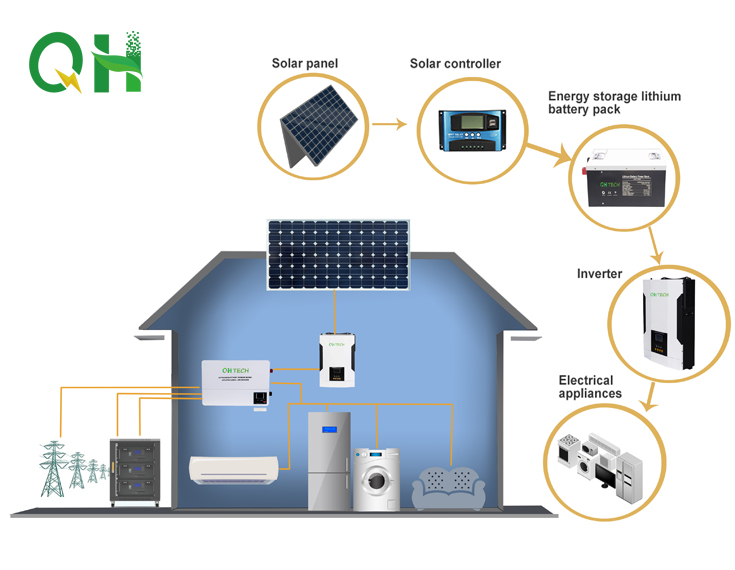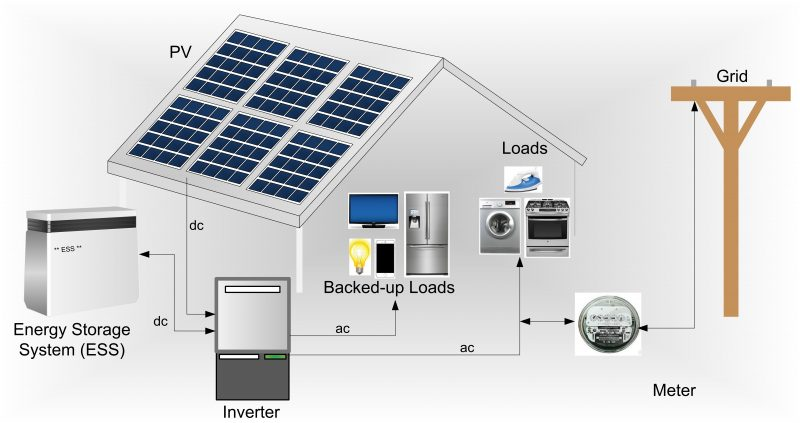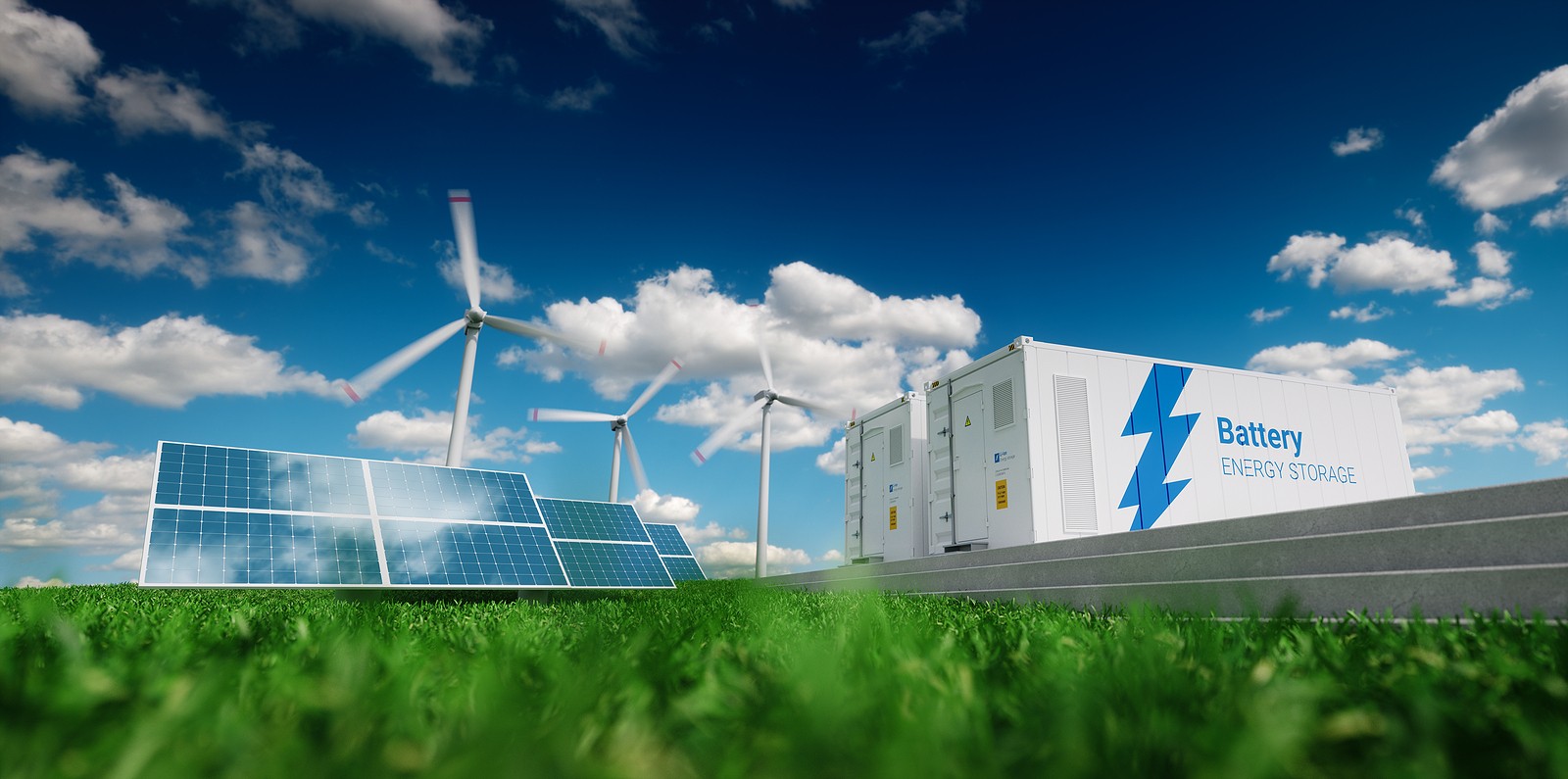In an age where rising energy costs and environmental concerns dominate daily life, homeowners are increasingly turning to innovative solutions. Solar energy storage has emerged as a powerful way to achieve energy independence, lower utility bills, and reduce carbon footprints. But how exactly does it work, and what should you know before making the investment?
Discover how solar energy storage systems can reduce your electricity bills, provide backup power during outages, and enhance your home’s energy efficiency in 2025.
Today, solar energy storage systems are advancing rapidly, offering exciting integrations with smart home technologies. By connecting solar batteries to intelligent home management systems, homeowners can optimize energy usage, automate backup power during outages, and even sell excess energy back to the grid, leading to increased energy savings and improved efficiency.
Curious about maximizing savings and achieving true energy independence? Let’s dive deeper into the essentials of solar energy storage.

Table of Contents
Understanding Solar Energy Storage
Solar energy storage refers to capturing excess solar energy generated by solar panels and storing it in a battery for later use. Instead of losing surplus electricity or feeding it into the grid at low rates, homeowners can store it for use at night or during power outages. This concept dramatically enhances power saving and ensures continuous access to clean energy.
Typically, a solar energy storage system includes solar panels, an inverter, a battery pack, and a battery management system. The energy conversion process involves transforming direct current (DC) produced by the panels into alternating current (AC) suitable for home appliances. With a reliable battery backup, households can efficiently utilize renewable energy and significantly cut their reliance on traditional electric power sources.
In addition to offering energy security, solar energy storage systems contribute to grid stability. By reducing the strain on public utilities during peak demand times, distributed solar energy systems make it easier to transition to clean, renewable energy sources. The benefits are felt not just at the household level but also across communities aiming for more sustainable electric power solutions.
Types of Solar Batteries
Choosing the right type of solar battery is crucial for optimizing your system’s performance. The main types include:
- Lithium-Ion Batteries: Popular for their high energy density, longer lifespan, and minimal maintenance. They are ideal for residential applications seeking green energy solutions.
- Lead-Acid Batteries: More affordable but require more maintenance and have shorter life cycles. Best suited for budget-conscious users needing new energy backup.
- Flow Batteries: Emerging technology that offers excellent scalability and long life but can be costlier initially.
- Solid-State Batteries: Still in the development phase, these promise safer, higher-capacity storage in a compact form, aligning with future green power needs.

Each battery type offers unique benefits depending on whether you prioritize cost, energy saving, space efficiency, or longevity.
When selecting a battery, consider depth of discharge (DoD) and efficiency ratings. Higher DoD means you can use more of the battery’s stored energy, improving overall battery pack performance. Similarly, choosing batteries with high efficiency ensures minimal energy loss during storage and use.
Benefits of Solar Energy Storage
Solar energy storage systems provide several critical advantages:
- Lower Electricity Bills: By storing and using your own energy, you reduce your dependence on grid electricity, resulting in substantial cost savings.
- Battery Backup During Outages: In emergencies, having a battery backup ensures your essential devices remain powered, providing crucial security and comfort.
- Energy Independence: Reduce reliance on electric power providers and gain greater control over your home’s energy needs.
- Environmental Impact: Transitioning to clean energy helps reduce your carbon footprint and supports renewable energy initiatives.
- Smart Energy Management: Advanced battery pack systems can optimize when and how energy is used, boosting power saving without sacrificing comfort.
Furthermore, solar energy storage enhances resilience against rising energy prices. By producing and storing your own green power, you insulate yourself from utility rate hikes and contribute positively to building a cleaner, more sustainable future.
Solar systems equipped with a battery pack can also participate in net metering programs, earning credits by feeding surplus energy back to the grid. This dual functionality turns solar setups into proactive tools for both energy saving and income generation.

Costs and Incentives in 2025
Investing in solar energy storage in 2025 has become more affordable due to technological advancements and increased market competition. Here’s what to expect:
- Installation Costs: Prices vary based on system size, battery type, and region but are generally decreasing year by year.
- Government Incentives: Tax credits, rebates, and other incentives are widely available, particularly for homeowners choosing clean energy options.
- Return on Investment: Most systems pay for themselves within 5-10 years through energy saving and reduced utility bills.
Solar Investment Tax Credits (ITC) remain a major benefit in 2025, allowing homeowners to deduct a percentage of the cost of installing a solar system from their federal taxes. Some states also offer additional rebates for new energy installations, further promoting the adoption of green energy solutions.
The long-term savings from reduced electric power bills, combined with incentives, make solar battery storage an increasingly attractive option for forward-thinking homeowners. As battery technology becomes more efficient and affordable, these systems are poised to become a standard component of modern homes.
Choosing the Right System for Your Home
Selecting the best solar energy storage system involves several key considerations:
- Energy Consumption: Analyze your household’s energy use to determine the size and capacity of the battery pack needed.
- Compatibility: Ensure the battery backup system integrates well with your existing solar panels and home electrical setup.
- Future-Proofing: Opt for systems that allow for expansion or upgrades as technology evolves.
- Warranty and Support: Look for systems backed by strong warranties and reliable technical support for peace of mind.
- Budget: Balance the upfront costs against long-term energy saving benefits and available incentives.
You should also consider whether you want an AC-coupled or DC-coupled battery system. DC-coupled systems are typically more efficient but may require more complex installations. AC-coupled systems offer flexibility, especially when retrofitting solar energy storage to existing solar panels.
Additionally, exploring options for integrating smart home technology can maximize the performance of your clean energy system. Automated load shifting, smart charging schedules, and real-time monitoring help to enhance power saving and make your green power system truly efficient.

Conclusion
Solar energy storage empowers homeowners with battery pack solutions that deliver battery backup, clean energy, and real savings.
Contact us today to start your green power journey!

-scaled.png)
